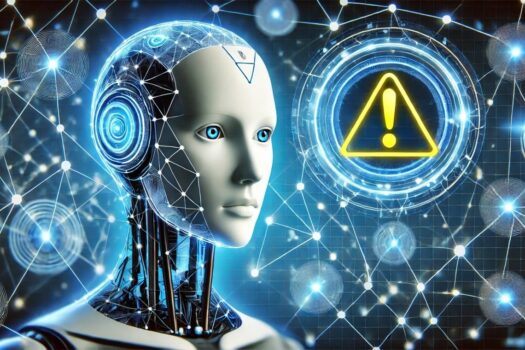In response to the newest analysis, the blockchain emerges as a key expertise in mitigating the attainable detrimental results of AI functions.
Synthetic intelligence has certainly revolutionized quite a few sectors, but it surely has additionally raised doubts about moral points, information safety, and transparency.
Similar to the blockchain, crypto additionally represents a necessary complement to synthetic intelligence, providing new views for innovation and safety within the digital age. Let’s see all the small print under.
How blockchain can mitigate the detrimental impacts of AI apps
As anticipated, blockchain and cryptocurrencies emerge as key instruments to mitigate the dangers related to AI, offering revolutionary options to authenticate content material and confirm identities.
The appearance of intelligenza artificiale (IA) generative has posed new challenges to policymakers on find out how to regulate these highly effective applied sciences.
Nevertheless, with the adoption of cutting-edge applied sciences, it’s attainable to information AI in the direction of useful makes use of and create a secure and clear digital ecosystem.
One of many essential questions is find out how to make sure the authenticity of the content material in a context the place any media will be generated synthetically.
Deepfakes, particularly, signify a big risk, as they can be utilized to impersonate public figures or to dismiss genuine media as false.
A current instance is using a deepfake of the President Biden to discourage voters within the New Hampshire primaries.
The answer to those issues would possibly lie in blockchain technologies, which supply immutable ledgers to confirm the authenticity of photos and movies.
Organizations just like the Coalition for Content material Provenance and Authenticity (C2PA) are creating technical requirements to handle this problem, however the outcomes are nonetheless imperfect.
The implementation of blockchain in recording gadgets, resembling cameras and smartphones, might be sure that each picture or video is validated as genuine pixel by pixel.
The Numbers Protocol is an instance of how work is being finished on this route.
Id verification and safe transactions
Along with the problem of content material authenticity, AI raises points concerning on-line id verification.
Massive language fashions (LLM), resembling ChatGPT, can mimic an individual’s writing model, making id verification much more advanced.
It follows that the necessity to stop cybercrimes resembling id theft and to make sure age verification on social platforms is extra pressing than ever.
The cryptocurrencies supply a attainable answer with the digital id infrastructure based mostly on biometric authentication and zero-knowledge proofs.
This expertise permits verifying solely the knowledge vital for a particular transaction, preserving the privateness of the customers.
Tasks like Worldcoin, supported by the CEO of OpenAI Sam Altman, are exploring these potentialities.
Governance of synthetic intelligence brokers
Moreover, the rise of synthetic intelligence brokers introduces new challenges for the governance of the Web.
These brokers, with the flexibility to carry out advanced actions on behalf of people, might turn into trusted advisors, able to interacting with different brokers and other people, together with in monetary transactions.
Nevertheless, the mixing of those brokers into the normal banking system remains to be far off.
The stablecoin, cryptocurrencies pegged to the worth of the greenback, might play an important function.
Regulated and broadly adopted, they might facilitate monetary transactions of AI brokers, providing a well-recognized and safe choice for each customers and monetary establishments.
Nevertheless, cryptocurrencies, though mature as a expertise, proceed to battle to adapt to a regulatory system and monetary system that was not designed for them.
In any case, via political and technical options, it’s attainable to construct a digital ecosystem able to face the challenges of the subsequent industrial revolution pushed by synthetic intelligence.




